In many regions, wintertime means more time spent indoors. This is especially true of the Scandinavian cultures, where there are only a few hours of sunlight each day. These long winters with short days have shaped the aesthetic of the region.
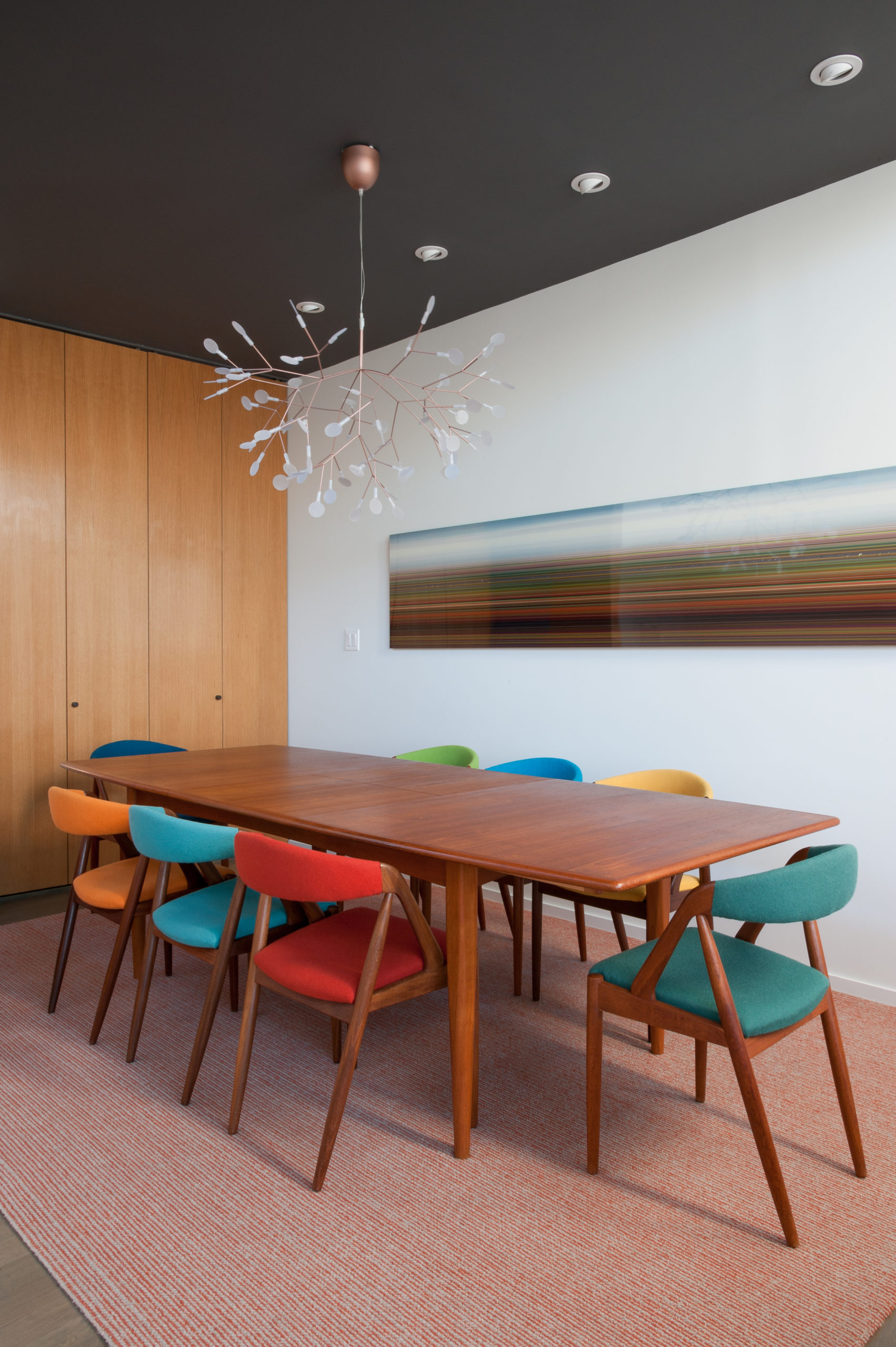
In recent years, we’ve seen a rise in popularity of mid-century Scandinavian design, and the Danish word ‘hygge’ has become widely understood as a word that captures a feeling of coziness or well-being.
I found myself identifying with the feeling of hygge on several occasions last summer while visiting my dad’s native country of Norway. And while it is not necessary to acquire possessions to experience the feeling, for me, it was triggered by many of the interior spaces we visited. Perhaps that is because those spaces sparked memories of my dad and the fanciful stories of Norwegian folklore that I grew up with.
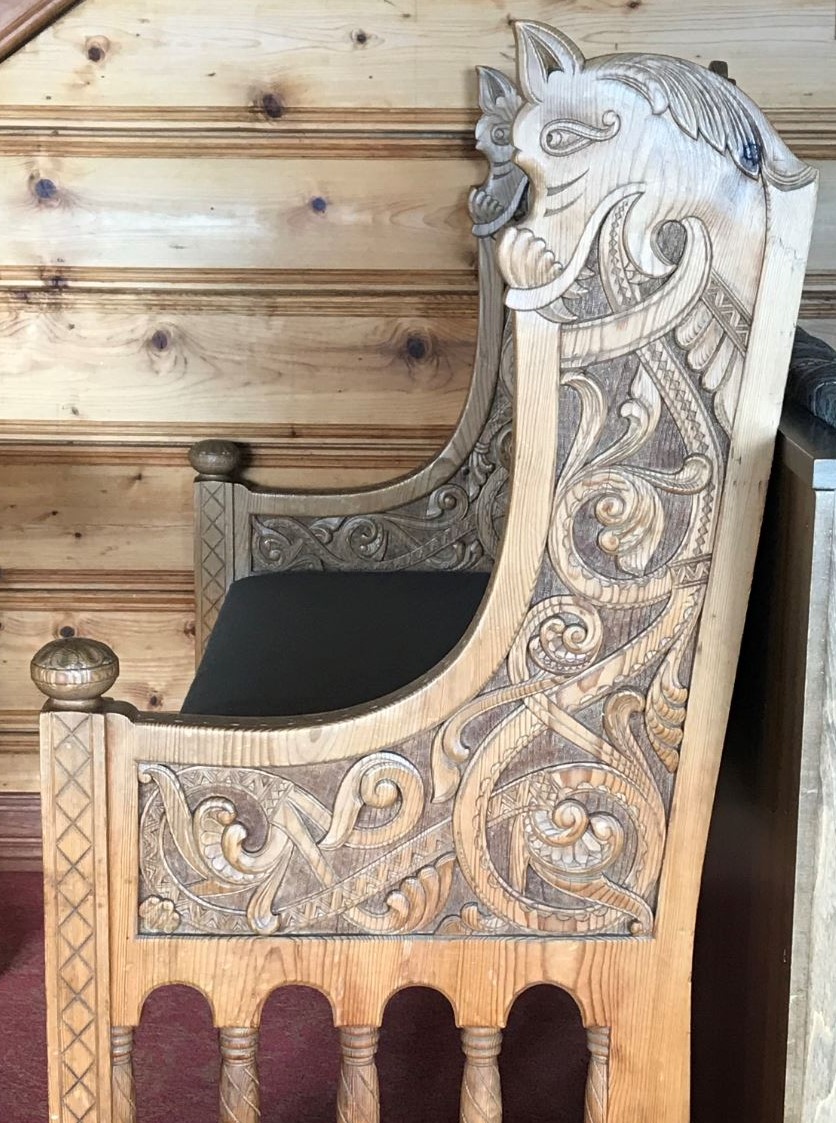
One of the common threads of Norwegian design is the skillful and diverse use of wood. From Viking ship design to the modern-day Norwegian Opera House by the Architecture firm Snøhetta, wood is a pervasive material in design and construction.
Wood can be a very comforting material. The color tones are warm, and it is literally warm to the touch, in contrast with materials like glass, metal, or stone. It also lends itself to some of the most creative decorative possibilities.
For my fellow San Franciscans, you may know the work of the Norwegian Architecture firm Snøhetta from the recent expansion of the SFMOMA. They have had a significant influence on the architecture in their native country, including the recently completed Oslo Opera House.
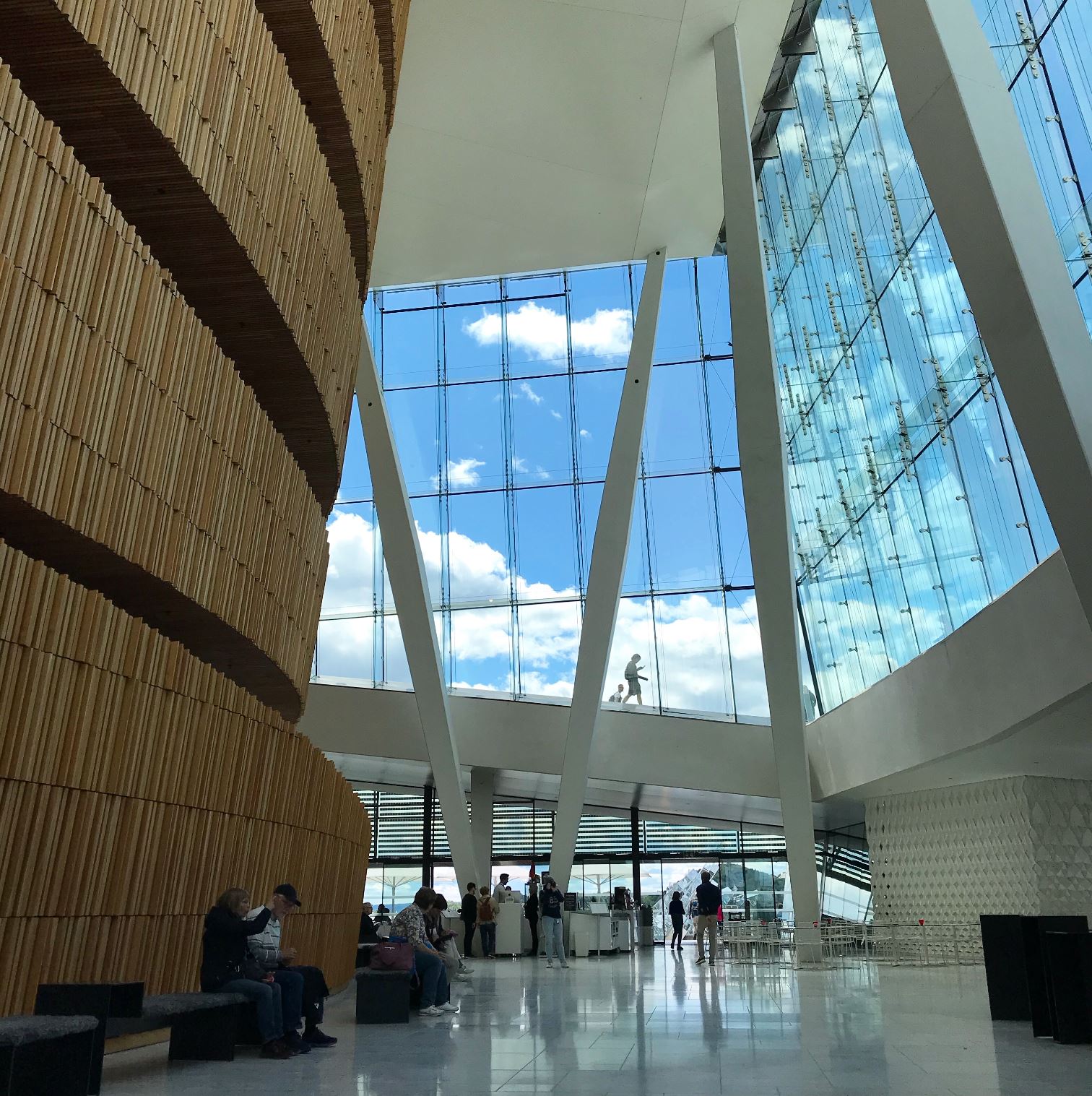
In the public lobby, the glass-enclosed space surrounds the inner concert hall, which is clad in a sculptural pattern comprised of strips of wood.
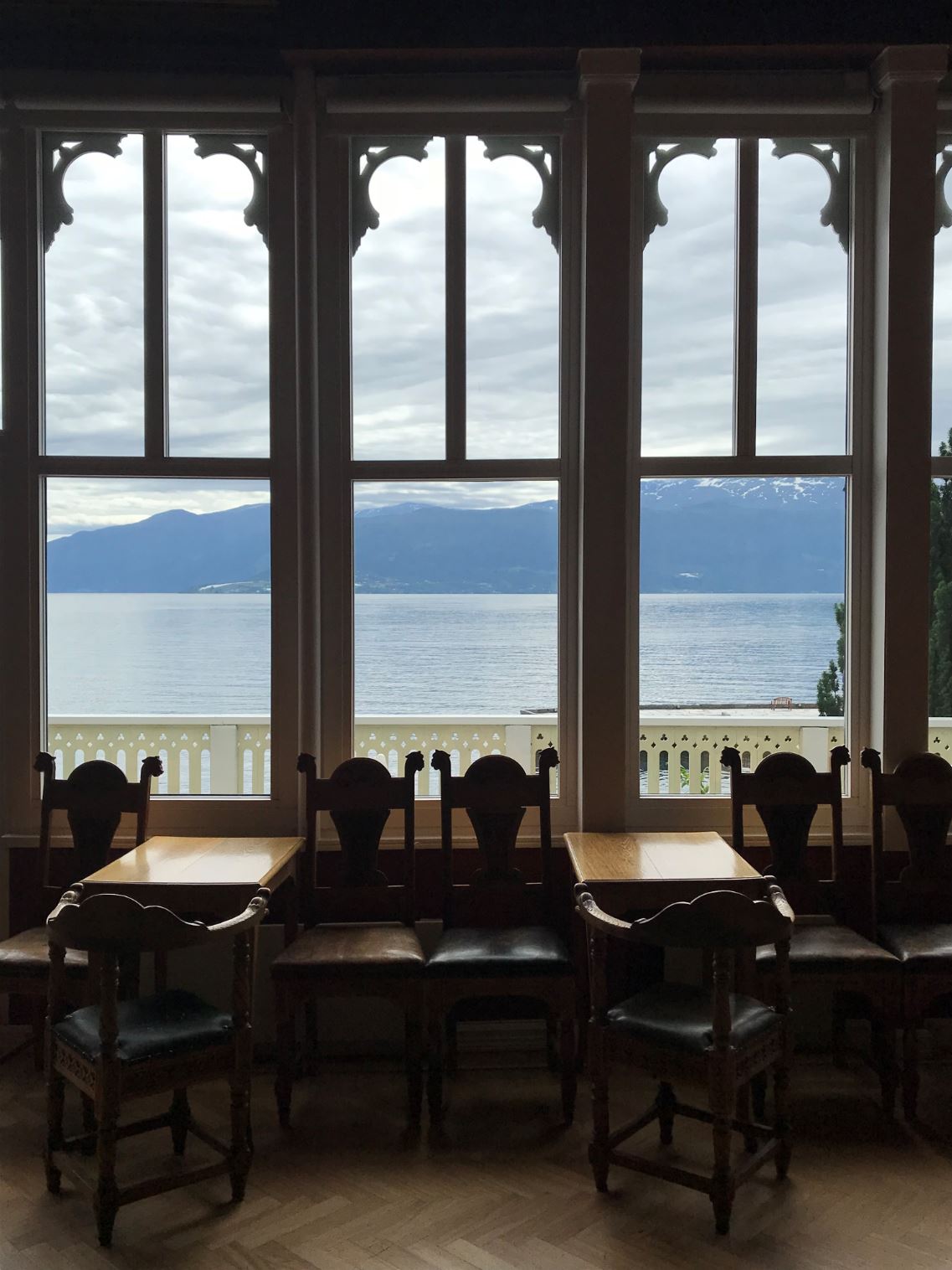
In a more traditional setting, the series of sitting rooms at the Kviknes Hotel in the fjord town of Balestrand holds an extensive collection of intricately carved wood furniture, each telling a story. And the view of the fjord is just icing on the cake.
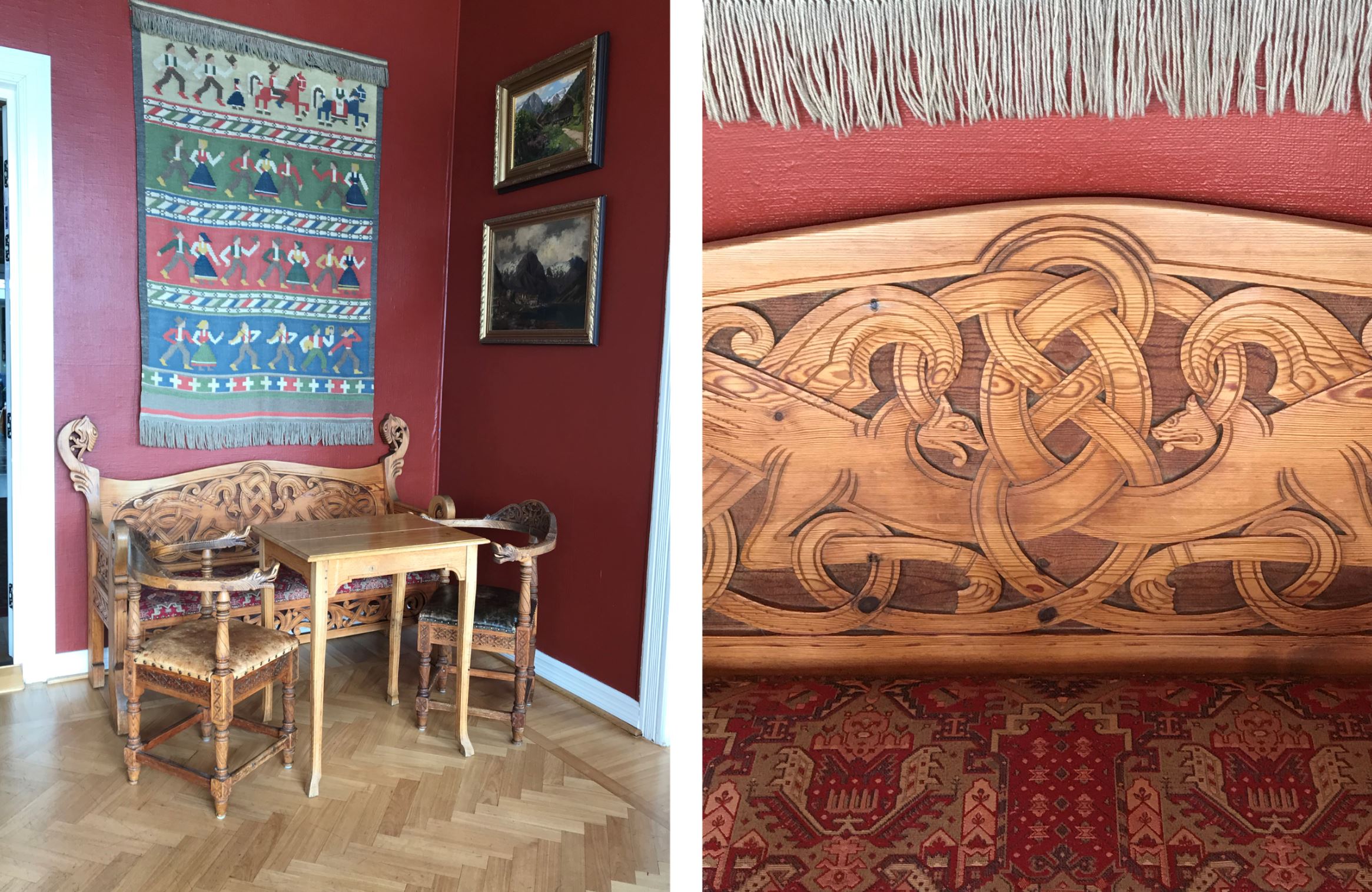
Here is one of the seating areas at the Kviknes Hotel, and a detail of the carved back of the settee. A traditional tapestry in rich colors hangs above the settee, and the deep red walls feel warm and inviting.
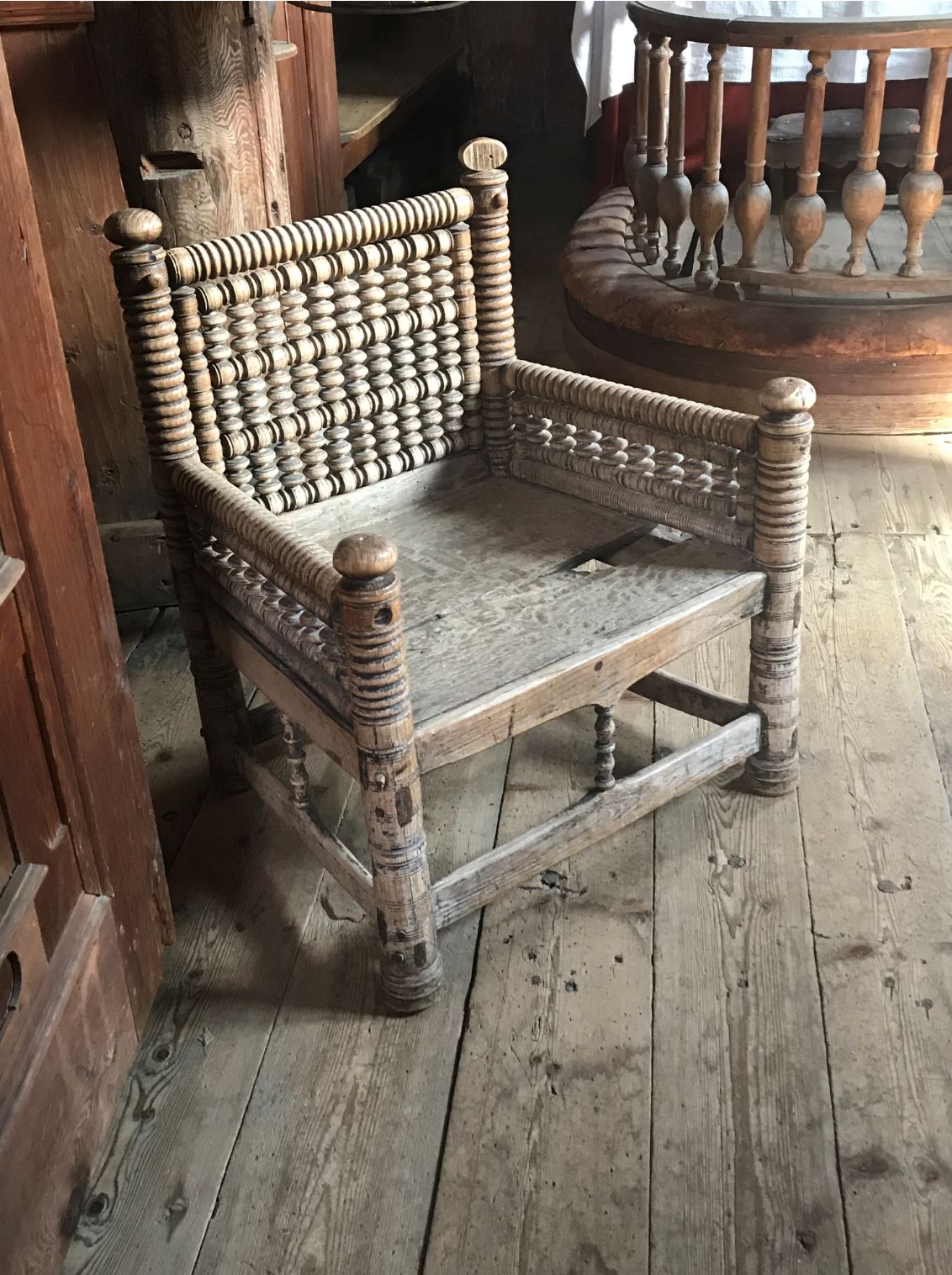
The chair above represents a rustic yet intricate example of Norwegian woodworking. This one is from the Urnes Stave Church. Although I don’t know the date of this chair, the Stave Churches were built between approximately 1130 and 1350.
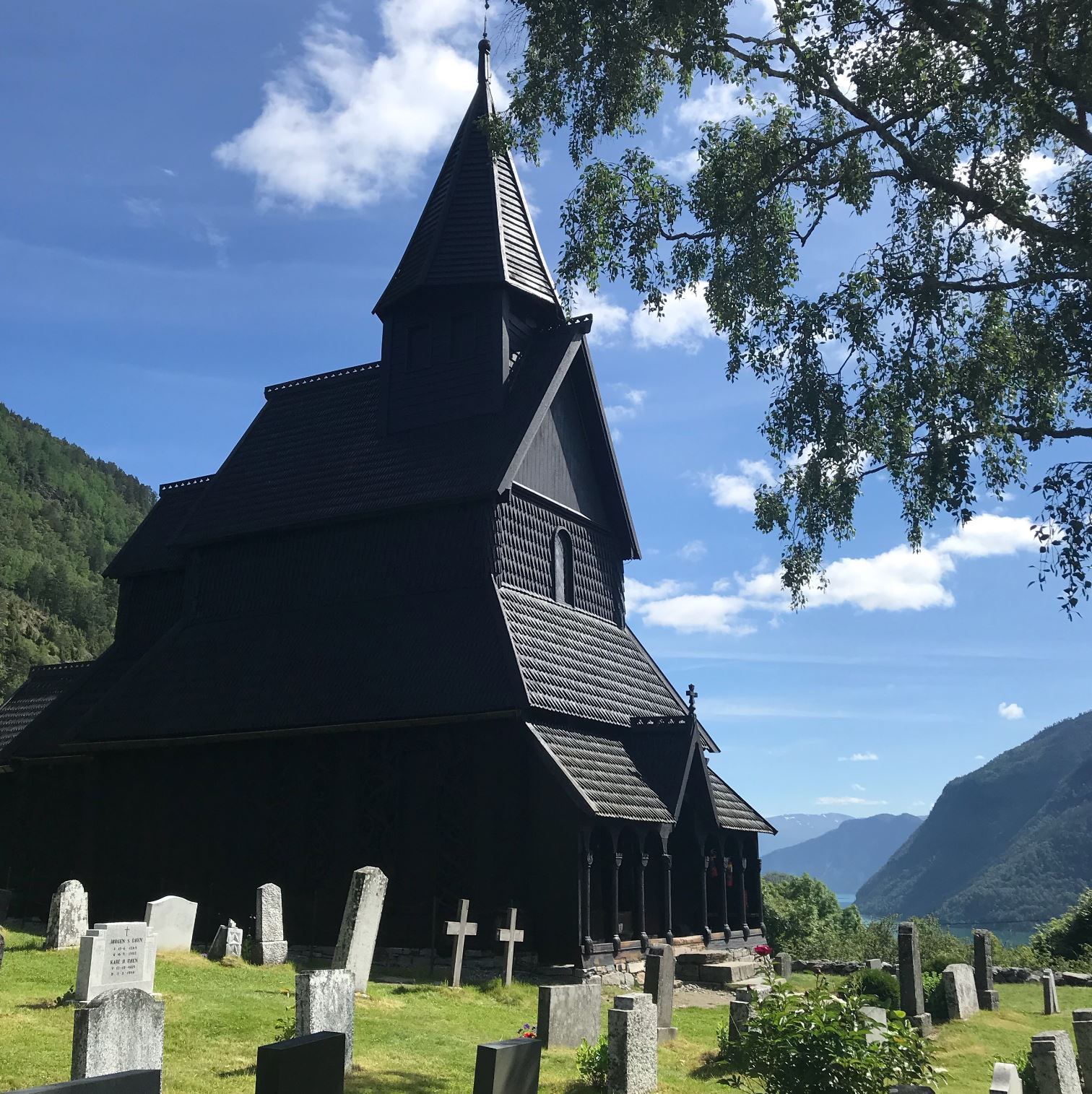
Above is a picture of the exterior of the Urnes Stave Church. Construction began in the 12th century and continued into the 1600s.
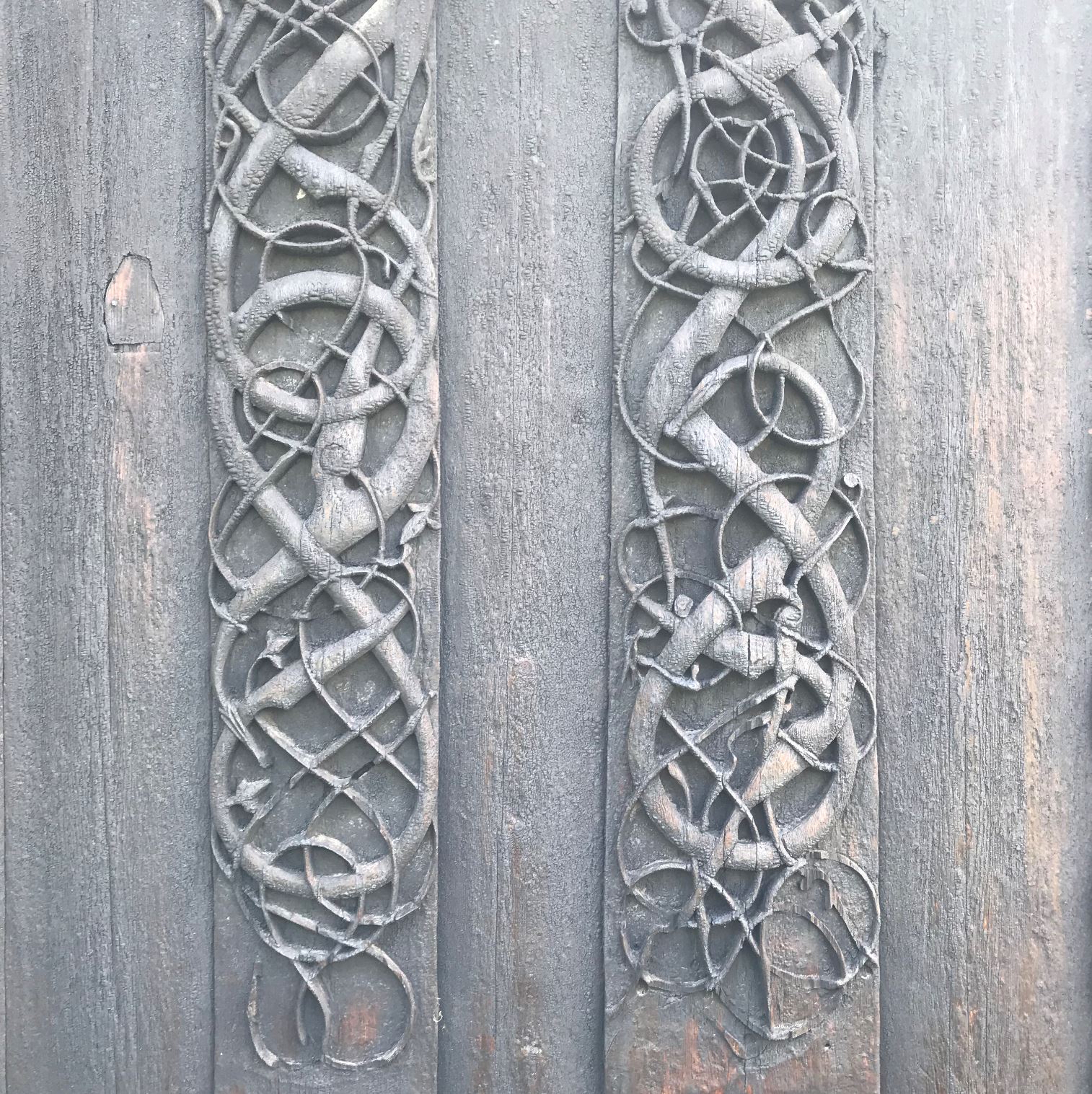
The wood carvings above are found on the outside of Urnes Stave Church and demonstrate the lasting influence of the Viking culture as Christianity spread through the Nordic regions.
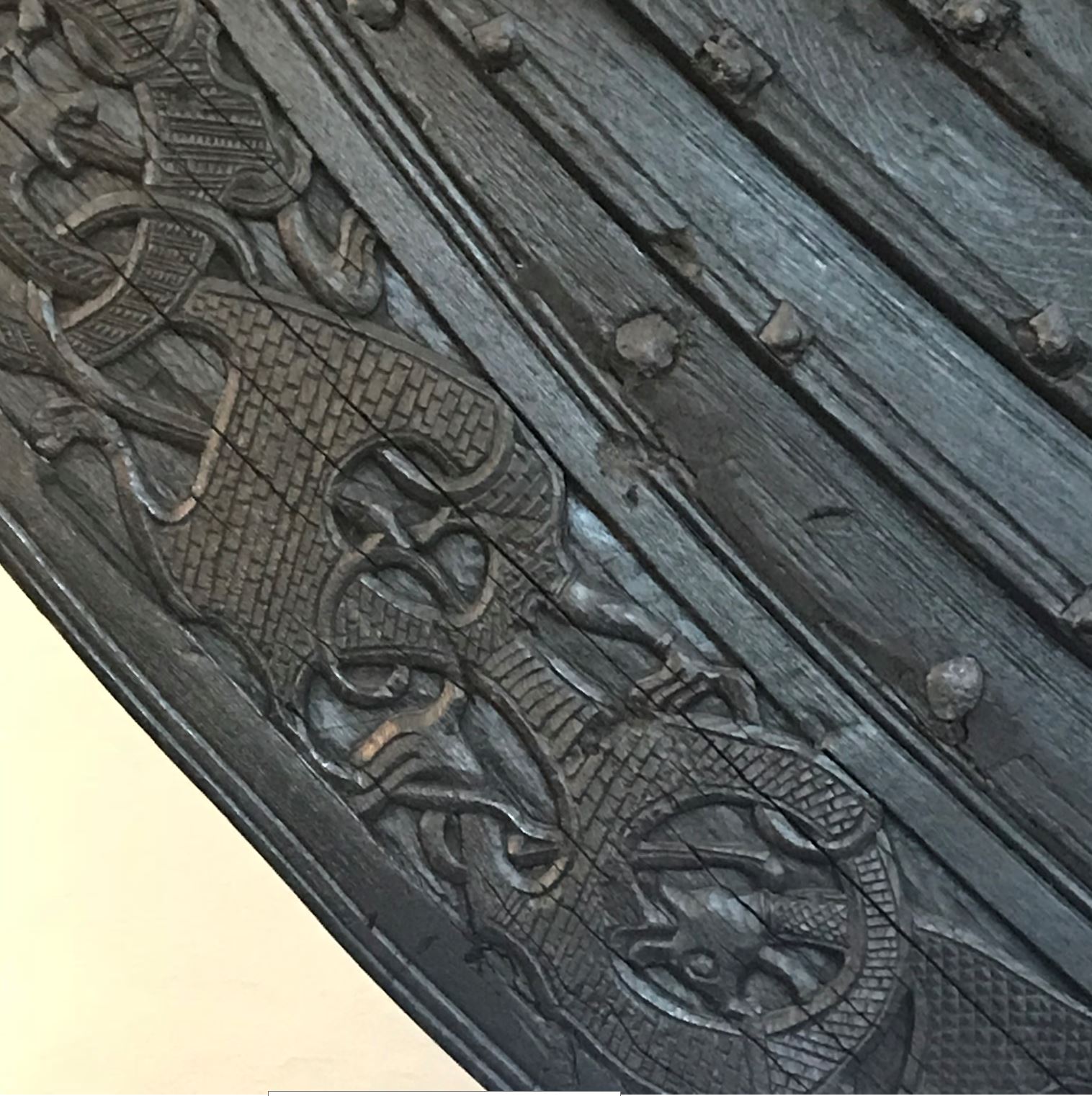
Above is a detail of the Oseburg Viking burial ship, built c. AD 820 and excavated in the late 1800s. This ship and three other burial ships are on display at the Viking Ship Museum.
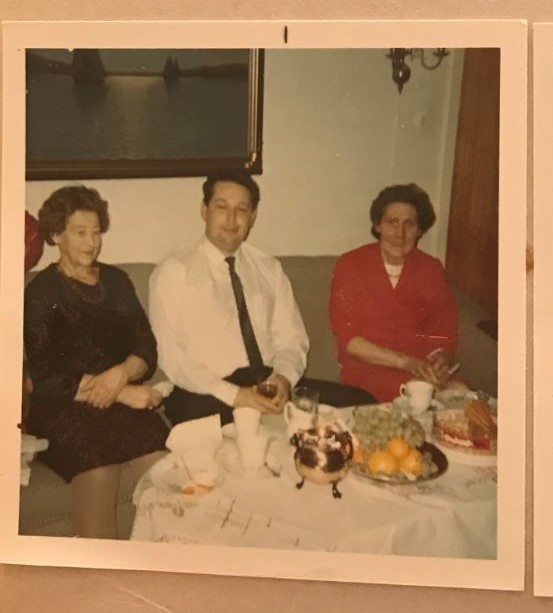
There are many ways that we can add warmth and comfort to our winter days. Sometimes all it takes is a tablecloth, a spread of tasty things to eat, and good company. I found the picture above in a photo album while visiting my aunt, who still lives in the home in Oslo where my dad grew up.
Hi Ellen. Thanks for sharing your beautiful work.. Your comments and stories and photographs were great. I do not recognize the t-shirt that Erin is wearing in the photograph of you and her. Your “admission” sounds like you may have trespassed…but rest easy….the statute of limitations has passed! Our best to you and your family. Gary
Thank you Gary! And what a relief to know that Erin and I are in the clear! All the best to you too.